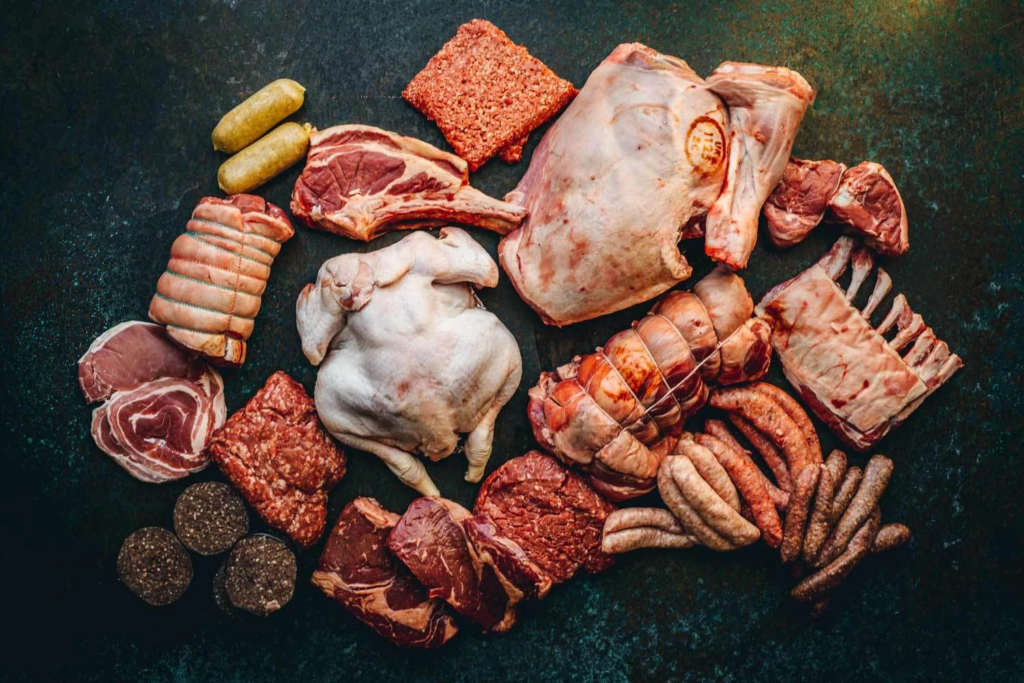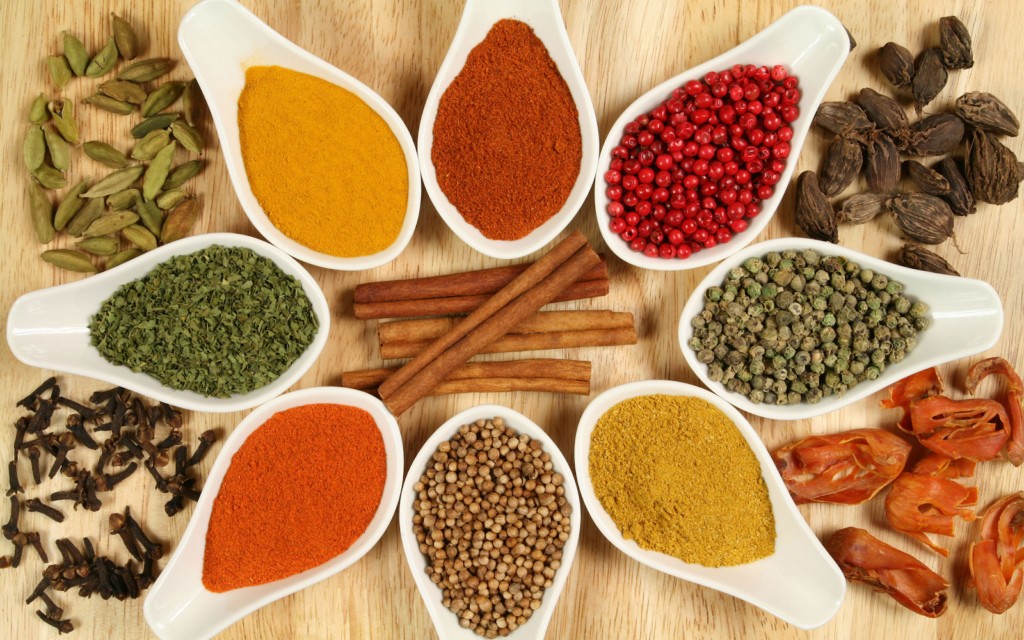The product list below is a solid base for your new diet. Nutrition rhythm does not implicate any serious limitations, but for junk food. There will be no complicated recipes either. Moreover, it is important to keep all your regular foods (even if they are not on the list) for the first week.
Meat, poultry, fish, fermented milk – proteins:

Through the hierarchy: fish, eggs, seafood are admissible. Cod liver, river and sea fishes, especially oil-rich ones (salmon, tuna, herring, mackerel, saury, sardines), any marine products fit even if they were previously frozen.
Chicken and quail eggs from good-doers can be taken daily.
Poultry: duck or game, rabbit, turkey and as the least – chicken. Choose only natural production and avoid consuming it every day.
Choose grain and grass-fed meat (without additives and compound feed) from small farms 1-2 times a week. Lamb and poultry are the best for your diet, beef comes next. Chicken and pork should be minimised as they are rich in pro-inflammatory omega-6.
If you prefer cultured milk foods for your menu – pick organic or farm manufactured foods without additives or sweeteners. They have different ingredients, smaller molecule size, which makes them non-sensitizing and digestive. To measure the dose that is enough for you – use your thumb.
What you should avoid is commercial production. Struggle to find local organic manufacturers or choose blast chilling or precooked seafoods. Read the labels carefully to make sure they contain nothing else but fish, salt and spicery. Deny the foods if you spot any starch, sugar or other unknown ingredients, like hydrogenated, deodorized oils.
You can eat your fish and seafood dried, baked, boiled with broth, steamed or stewed. Occasionally simmer it in good Extra Virgin olive oil, coconut oil, butter or grilled.
Oils, nuts and fats:

Use only unrefined oils (olive, flaxseed, avocado, safflower, coconut) or butter. Keep them in the fridge.
Imbue your diet with oil-rich fish: mackerel, herring, salmon, tuna in brine and sardines in unrefined oil.
Add raw seeds and any nuts (but for peanuts) to your diet to make it rich in useful substances.
Unlimited avocados are allowed too. You can eat them every day and they will bring only benefits.
As for the stop-list: peanuts and all refined oils, trans fats (deep fried foods, breaded foods, ready-to-eat salad dressings, margarine, mayonnaise, purchased dough, store baked goods, icecream, waffles, and other sweet pastry, cakes, chips, popcorn).
As for the perfect desserts: berries, chia puddings without syrups, dark chocolate with nuts will fit.
Porridge, cereals, beans:

Stick to gluten-free grits: buckwheat, quinoa, whole-grain or wild rice, amaranth and millet. Add milled flax to your meals for double benefit.
Bread: 1-2 times a week for lunch only. Choose whole grain sourdough bread without sugar or butter. Brown rice or buckwheat crispbread is an option too.
Chickpeas, green and red lentils, fresh or frozen peas, mung bean, dhal, black beans should be served occasionally for lunch only.
Some of the carbos are obtained from vegetables, root crops and fruits.
Top-fruits for your diet are:
all red and black berries (even if they were frozen), kiwis, citrus cultures, pineapples, papayas, plums. Eat them in the morning and after lunch for dessert.
Top-vegetables are:
all leafy greens, romaine, iceberg lettuce, frisee, spinach, rocca salad, silverbeet, dill, broccoli, cauliflower, zucchini, Brussels sprouts, cousa squash, peas, green beans, sweet peppers, carrots, kale, tomatoes, asparagus. Choose potatoes, sweet potatoes, pumpkin, beets, parsnips, and corn 1-2 times a week.
Restrict consumption of all types of flakes, cookies, pies, pastas, white rice and white bread. Products of refined white flour, with refined or added sugar; packaged and freshly squeezed juices (except for the tomato one).
Try smoothies instead. They are the best alternative. Berry or green flaxseed smoothies before meals will boost up your stamina.
Oatmill is a wise option, especially for breakfast. But there is 1 condition to observe – when choosing oatmeal, make sure it is a branny whole-grain product.
Spices and condiments:

If you know exactly how this or that supplement looks when it is growing – feel free to use it for your meals (dried basil, rosemary, garlic). Avoid seasoning mixes and canned food. For instance, salted salmon is a way much better option than tuna in a can. But if you choose preserves – pick the ones with brine, not oil.
Improve your foods with flax, sesame seeds, turmeric, cinnamon, pumpkin seeds, nuts, cardamom, ginger, caraway seeds, cumin. Stimulating spices and additives.
The foods that should be on your menu every day are:
- flax seeds in all cereals and vegetables,
- dark leafy greens,
- onion and garlic,
- artichoke, sweet potato and potatoes baked in peel,
- leek,
- asparagus,
- barley, chicory,
- crushed cocoa beans (not powder),
- hemp seeds and bran,
- flax and sesame seeds,
- pumpkin seeds and nuts,
- seaweed,
- mushrooms (eringi, shiitake, oyster mushrooms),
- any sprouts (as much as possible).

















